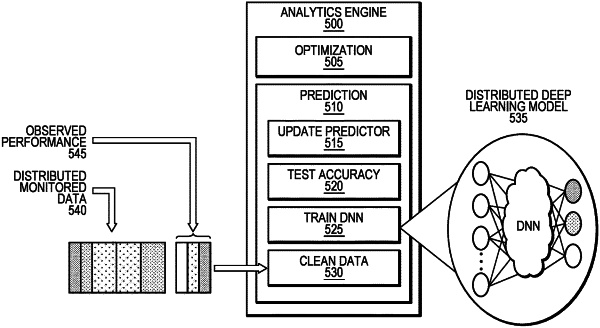| CPC G06N 3/08 (2013.01) [G06F 9/48 (2013.01); G06F 9/4843 (2013.01); G06F 9/4881 (2013.01); G06F 9/50 (2013.01); G06F 9/5061 (2013.01); G06F 9/5066 (2013.01); G06F 9/5077 (2013.01); G06F 9/5083 (2013.01); G06N 3/02 (2013.01); G06N 3/04 (2013.01); G06N 3/086 (2013.01); G06F 2209/501 (2013.01); G06F 2209/5011 (2013.01); G06F 2209/5019 (2013.01)] | 15 Claims |

|
1. A computer implemented method comprising:
executing a workflow using known input data to produce corresponding output data, wherein the workflow comprises a set of subworkflows and each subworkflow of the set of workflows comprises a set of tasks, wherein each task of the set of tasks has a requirement of resources of a set of resources and each task of the set of tasks is enabled to be dependent on one or more other tasks of the sets of tasks;
training a deep neural network based on execution of the set of subworkflows, the training comprising:
collecting provenance data from the execution of the set of subworkflows; and
collecting monitoring data that represents a state of the set of resources;
wherein the training causes the neural network to learn relationships between the states of the set of resources, the sets of tasks, their parameters and an obtained performance, and wherein the relationships between the states of the set of resources, the sets of tasks, their parameters, and the obtained performance are non-linear; and
controlling allocation of resources of the set of resources to each task of the sets of tasks to ensure compliance with a user-defined quality metric based on output of the deep neural network, wherein the optimization further comprises creating at least one non-linear model based on the relationships between the states of the set of resources, the sets of tasks, their parameters, and the obtained performance.
|